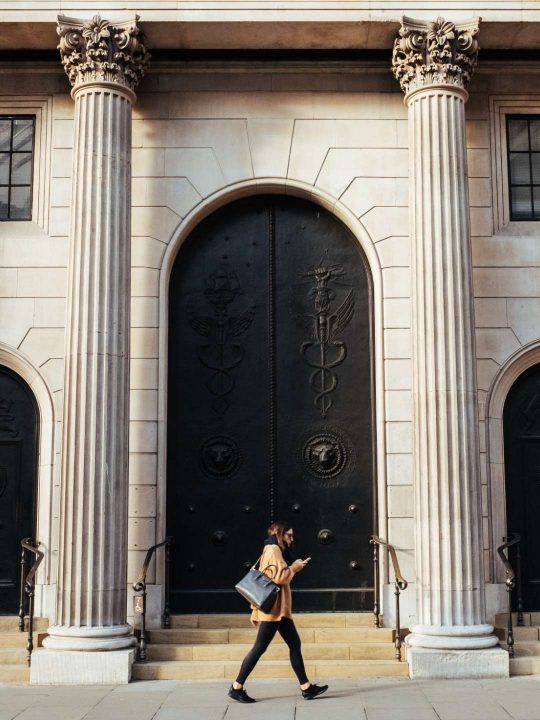New found differentiation in financial services

Countless brands offer similar, if not identical, goods and services. Take your last trip to the grocery store – how many ‘different’ chocolate bars persuaded you to add them to your basket? Which one did you actually buy, and why?
In a saturated economy with over half a million companies being created each year, consumers are spoilt for choice, and thus, have skyrocketing expectations. There is no doubt that the reason certain brands earn larger market shares than others comes down to their ability to create and communicate a brand image that is more compelling – that connects with their target consumers more strongly.
As more data becomes available about how businesses connect with customers, it’s apparent the emotional bond companies form with consumers is one of the biggest factors to create a long-lasting bond.
Brand loyalty depends on the way customers feel about a company: if they care or understand them, and if they feel as if the brand is making a positive change for the world. It comes as no surprise to me, then, that using branding as a conduit to create a common identity between a company and its target consumers is more important than ever.
But what ‘good’ for the world can utility companies such as electricity, telecommunications, banking, or even insurance possibly offer? How can business chosen through need or obligation as opposed to a want capture our imaginations? While solid and dependable, the sector wasn’t previously considered cutting-edge, innovative, or exciting. The main goal was to keep the lights on without breaking the bank. And you definitely do not find people talking about choosing insurance providers in the same way they talk about buying the newest smartphone. Fast forward to today and, while still focused on reliability and affordability, the utility sector appears to be morphing into something very different. Faster, cheaper, more powerful computing and improved connectivity are fueling the growing deployment of technologies.
Emerging brands are leading a transition into prioritising design and technology-driven solutions – delivering more personalised customer experience, lower costs and self-service solutions. They also emphasise the reduction of energy consumption as a response to growing environmental consciousness. Challenger brands like Bulb and OVO are capitalising on this belief, offering smart meters and green energy sourced from renewable generators. This trend extends beyond and onto the hands of users – as apps like ‘Green Outlet’, ‘Energy Cost Calculator’ or ‘Smappee’ allow customers’ to control and manage energy use and monthly bills in real-time.
Within the insurance sector we are also seeing start-up’s purpose-driven by technology and financial efficiency, promising yet again, more personalised care and flexibility. A prime example is Zego, who provide a highly-convenient digitised service prioritising transparency and value for money. Oscar Health markets themselves along similar lines as their adverts read, “health insurance shouldn’t be brain surgery. Unless you need brain surgery. ” They don’t look, feel or speak like other insurance brands – they’re friendly, honest, and here to make your life easier, not harder. Like Zego or Oscar, we are also seeing the old world being challenged – as they swap their ‘what if?’ approach with more positive brand purposes.
Let’s not forget about the banking industry – with digital banks stepping strongly into the room – intangible, ‘fun’, start-up lookalikes are convincing younger generations to trust them over established high street banks. Parking your money with a bank with no physical branch was considered crazy – so how is it that we’re hooked now? Convenience and delivery.
Take Monzo, the mobile-app ‘cool’ bank – no setup fees, built-in budget management, notifies spending, encourages saving and allows for free transfers across borders. It is transparent and honest – focusing solely on creating a great current account for you, delivering a very different customer relationship. Other financial technology companies like Starling Bank and Revolut are also offering lower charges for using their cards, the kind of features that make customers feel fairly treated and cared for, while continuing to deliver the reliability and security offered by established banks.
This doesn’t mean big banks aren’t trying to keep up with the times. Bank of America launched its AI-powered chatbot, Erica, to make it easier for customers to search transactions, transfers and deposit funds. Multiple banks, such as BBVA, HSBC or Barclays among others have introduced ‘budgeting’ sections within their Apps in hopes of keeping with the times. And Zelle, a no-fee and convenient service allows users to send and receive money across over 30 different banks.
What we gather from these examples is that it is easier for newer brands to position themselves in this way – and harder for established ones to integrate new technologies to meet consumer expectations. Younger consumers entering the utility market expect the same level of customisation, control and information that they get from their favourite consumer brands. So in order to ensure they don’t miss out on this new generation of consumers, established players need to look at how their products and services work for this audience at a fundamental level, before exploring how changes can be expressed at a brand level.
And I wonder, will media spending power be sufficient for established brands to keep their share in a market no longer held by its founding pillars? I doubt even money will be able to compete with the relationships some of these new brands are forging with their clientele – their brand loyalty raises their chance of keeping customers – and with such strong foundations and an ability to put across in an era of digitalisation and connectivity, large media budgets may increasingly take the backseat.

 Back to articles
Back to articles

